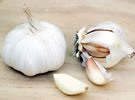 Investigations have been launched into the appearance of a large amount of imported garlic on the South African market during August and September which, it is suspected, was imported illegally. The oversupply dragged down the garlic market to abnormally low levels, to the detriment of domestic producers.
Investigations have been launched into the appearance of a large amount of imported garlic on the South African market during August and September which, it is suspected, was imported illegally. The oversupply dragged down the garlic market to abnormally low levels, to the detriment of domestic producers.
Both the South African Revenue Service (Sars) as well as an independent agency Agri Inspec are looking into whether approximately 107 tonnes imported during September 2018 were either under-declared in terms of value or the volume of the consignments of garlic. It will also ascertain whether the applicable import levies were applied and whether the garlic was irradiated as required for garlic from certain origins.
There is an import tariff of R3,25 (0.2 euros) per kg on imported garlic (excluding garlic from the European Union and Southern Africa) as well as an additional anti-dumping tariff of R19,25 (1.18 euros) per kg on Chinese garlic after previous occurrences of garlic dumping some years ago.
South Africa is a net importer of garlic, but a strong producer too: just over half (56%) of the garlic consumed in South Africa is imported. The country exports garlic to neighbouring countries.
Garlic market still limp after abnormal oversupply
The impact of this oversupply of imported garlic on the domestic market was significant. Prices have been unusually low and even now, the market still hasn’t recovered.
Traditionally domestic garlic supply is low from June to August and imports are highest during August and September, although, according to trade figures, official imports were 45% lower during this past August than a year before.
Bertus van Heerden, managing director of Agri Inspec, says that their investigation was started five weeks ago at the behest of the South African Garlic Growers’ Association. “The tragedy was that just when local farmers were ready to enter the market with their garlic, these huge consignments hit the market and for several weeks very little local garlic could get sold.”
Trader: Local and Spanish garlic superior to irradiated Chinese garlic
A trader on the fresh produce market says that prices are far below the levels of last year and, particularly, the year before, at around R30 (1.84 euros)/kg for large, white garlic. (At one large retailer, garlic is currently traded at R120 (7.36 euros) per kg.)
According to this trader, the prices for Chinese garlic are currently higher. “It looks beautiful but it’s rubbish,” he says of irradiated Chinese garlic. “I sell a lot of it but really, South African and Spanish garlic are much better quality. Spanish garlic looks more like our local garlic.”
He points out that the high import levies on Chinese garlic can run to R600,000 (36,800 euros) per container, which pushes up the retail price on the market from R120 (7.36 euros) to R300 (18.4 euros) per 10kg box. “If a smuggler pays off some people at Durban or Cape Town port for R200,000 (12,280 euros) they’re still smiling all the way to the bank,” he postulates. He says he has little doubt that the garlic oversupply of this season has been the result of smuggling.
